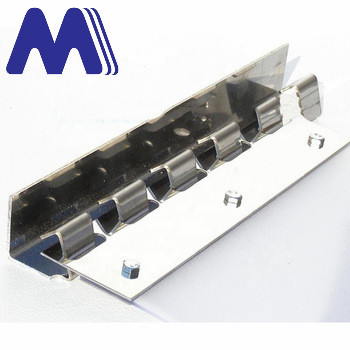- Afrikaans
- Albanian
- Amharic
- Arabic
- Armenian
- Azerbaijani
- Basque
- Belarusian
- Bengali
- Bosnian
- Bulgarian
- Catalan
- Cebuano
- Corsican
- Croatian
- Czech
- Danish
- Dutch
- English
- Esperanto
- Estonian
- Finnish
- French
- Frisian
- Galician
- Georgian
- German
- Greek
- Gujarati
- Haitian Creole
- hausa
- hawaiian
- Hebrew
- Hindi
- Miao
- Hungarian
- Icelandic
- igbo
- Indonesian
- irish
- Italian
- Japanese
- Javanese
- Kannada
- kazakh
- Khmer
- Rwandese
- Korean
- Kurdish
- Kyrgyz
- Lao
- Latin
- Latvian
- Lithuanian
- Luxembourgish
- Macedonian
- Malgashi
- Malay
- Malayalam
- Maltese
- Maori
- Marathi
- Mongolian
- Myanmar
- Nepali
- Norwegian
- Norwegian
- Occitan
- Pashto
- Persian
- Polish
- Portuguese
- Punjabi
- Romanian
- Russian
- Samoan
- Scottish Gaelic
- Serbian
- Sesotho
- Shona
- Sindhi
- Sinhala
- Slovak
- Slovenian
- Somali
- Spanish
- Sundanese
- Swahili
- Swedish
- Tagalog
- Tajik
- Tamil
- Tatar
- Telugu
- Thai
- Turkish
- Turkmen
- Ukrainian
- Urdu
- Uighur
- Uzbek
- Vietnamese
- Welsh
- Bantu
- Yiddish
- Yoruba
- Zulu
cold room curtains
The Essential Guide to Cold Room Curtains Enhancing Efficiency and Comfort
In various industries, from food storage to pharmaceutical manufacturing, the need for temperature control is paramount. Cold rooms or walk-in freezers help preserve perishable goods and sensitive materials, but maintaining the desired temperature can be challenging. An effective solution to this problem is the use of cold room curtains. These specialized curtains not only help to maintain optimal temperatures, but they also offer numerous other benefits. In this article, we'll explore the importance, benefits, and types of cold room curtains, as well as the considerations for selecting the right ones for your needs.
Understanding Cold Room Curtains
Cold room curtains, often referred to as insulated strip curtains or cold storage curtains, are designed to minimize temperature fluctuations in controlled environments. Made from durable materials, these curtains can withstand the harsh conditions of cold rooms and freezers, preventing the escape of cold air and the intrusion of warmer air. They are frequently used in warehouses, restaurants, grocery stores, and healthcare facilities, where temperature control is crucial.
Benefits of Cold Room Curtains
1. Energy Efficiency One of the primary advantages of cold room curtains is their ability to save energy. By reducing the amount of cold air that escapes when the door is opened, these curtains help to maintain a consistent temperature inside the cold room. This not only reduces energy consumption but also lowers operational costs.
2. Temperature Stability Cold room curtains create a physical barrier that helps maintain the internal temperature of the space. This stability is particularly important for sensitive products that can degrade or spoil if exposed to temperature fluctuations, such as food items, vaccines, and pharmaceuticals.
3. Enhanced Accessibility Unlike traditional doors, cold room curtains allow for easy access without the hassle of swinging doors. Employees can quickly enter and exit the cold room, increasing efficiency in operations. This quick access is especially useful in busy environments where time is critical.
4. Improved Hygiene These curtains can also contribute to better hygiene and cleanliness in cold storage areas. They can help minimize cross-contamination between different sections by providing a barrier against dust and pests, which is essential for industries dealing with food and pharmaceuticals.
5. Sound and Vibration Dampening Cold room curtains can also act as sound barriers, reducing noise pollution and vibrations from outside. This feature is beneficial in maintaining a calm environment for employees working in the freezer or cold storage area.
Types of Cold Room Curtains
cold room curtains

There are various types of cold room curtains available, and selecting the right one will depend on the specific needs of your facility. Some common types include
- Vinyl Strip Curtains These are flexible and transparent strips made of PVC, suitable for low-temperature applications. They allow light to pass through while providing insulation against cold air.
- Insulated Roll-Up Curtains These curtains can be rolled up when not in use, providing a flexible option for spaces with varying access needs. They are often insulated and can help maintain temperature more effectively than non-insulated options.
- Magnetic Curtains Equipped with magnetic strips, these curtains automatically close after passage, ensuring minimal air exchange. They are ideal for high-traffic areas where quick access is necessary.
Choosing the Right Cold Room Curtains
When selecting cold room curtains for your facility, consider the following factors
1. Material Choose durable materials that can withstand the cold environment and regular usage. Look for fabrics that are easy to clean and maintain.
2. Thickness and Insulation The thickness of the curtains will directly impact their insulating properties. Thicker curtains generally provide better insulation and energy savings.
3. Size and Dimensions Measure the entryway where the curtains will be installed to ensure a proper fit. Custom sizes might be necessary for non-standard openings.
4. Traffic Flow Consider the volume and frequency of traffic through the cold room. Selecting the right type of curtain will enhance efficiency and ease of access.
In conclusion, cold room curtains are an essential component in maintaining temperature control in various environments. They offer energy efficiency, temperature stability, improved access, and hygiene. With multiple types available, businesses can choose the best option tailored to their specific needs. By investing in quality cold room curtains, facilities can significantly enhance operational efficiency while ensuring that goods remain safe and preserved.
-
Magnetic Thermal Door Curtains Energy-Saving & Insect-ProofNewsMay.19,2025
-
Klare PVC Türleisten Durable, Transparent & Waterproof Door StripsNewsMay.19,2025
-
PVC Strip Curtains Durable Faltvorhang & Türrollen aus PVCNewsMay.19,2025
-
Industrial & Commercial Freezer Curtains Energy-Saving Cold Storage SolutionsNewsMay.18,2025
-
Clear Garage Door Curtains Durable, Energy-Saving PVC Strip SolutionsNewsMay.18,2025
-
China Style Curtains Hangers - Durable & Elegant Home Decor SolutionsNewsMay.18,2025



